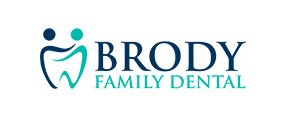
Digital Dental X-Rays near Glencairn

For your added safety and comfort Family Brody Family dental uses Dexis Digital X-Rays.
Why Do I Need Dental X-Rays?
Similar to an iceberg, only a portion of your tooth is visible upon a first inspection. When we look at your teeth with our naked eye we are only scratching the surface.
Your tooth is composed of several layers, with a large portion hidden below your gum line and in your jaw bone. The surface 'enamel' that we can visibly examine is meant to protect the inner parts of a tooth. Below your enamel is the Dentin, then the Pulp where the nerve and blood vessels nourish your tooth. Also hidden are your Jaw bone, joints and ligaments that help support your teeth. Damage, infection or abnormalities below the surface are often invisible but cannot be ignored.
X-Rays allow us to:
- Find decay and abnormalities between teeth and below the gum line.
- Monitor the effects of periodontal conditions.
- Monitor your jaw bone and the position of your teeth.
- Monitor areas of concern before they become a problem.
- Detect any growths or abnormality in your jawbone that may be a sign something more serious.
- Get a complete picture of your teeth in relation to each other and your mouth (both inside and out).
How are Digital X-Rays taken?
Digital dental X-Rays are faster and more comfortable than traditional dental X-Rays. To perform a digital dental X-ray we place a small sensor in your mouth which is connected to a computer by a tiny wire. An X-ray beam is then sent through your teeth, recording an image of your teeth, jaw bone and support structures which are then sent to a computer. The sensor can then be repositioned to capture other sections of your mouth. These images are proceeded by the computer, rather than needing to be developed on traditional film. This eliminates the need for toxic developing chemicals as well as increasing the speed and accuracy of the image.
Why do we use Digital Dental X-Rays?
We are all exposed to a very low dosage of natural radiation from the environment. Studies have shown that the radiation exposure from traditional dental X-Rays is about 1/100th of the amount of radiation received from natural sources. Digital dental X-Rays produce 80 - 90% less radiation when compared to traditional dental X-Rays.
Digital Dental X-Rays are much faster and more comfortable to use. As the images are captured electronically, there is no need to develop the X-Rays, thus eliminating the disposal of toxic waste into the environment. The digital image also allows us to enlarge, isolate and zoom into specific areas of the image, allowing us to find potential problems far earlier.
Even though digital X- rays produce lower levels of radiation than traditional dental X-Rays, Brody Family Dental still takes all necessary precautions to limit the patient's exposure by using lead apron shields to protect the body and only taking X-Rays when they are necessary.
Contact our Glen Park dental office to learn more about Digital Dental X-Rays.






